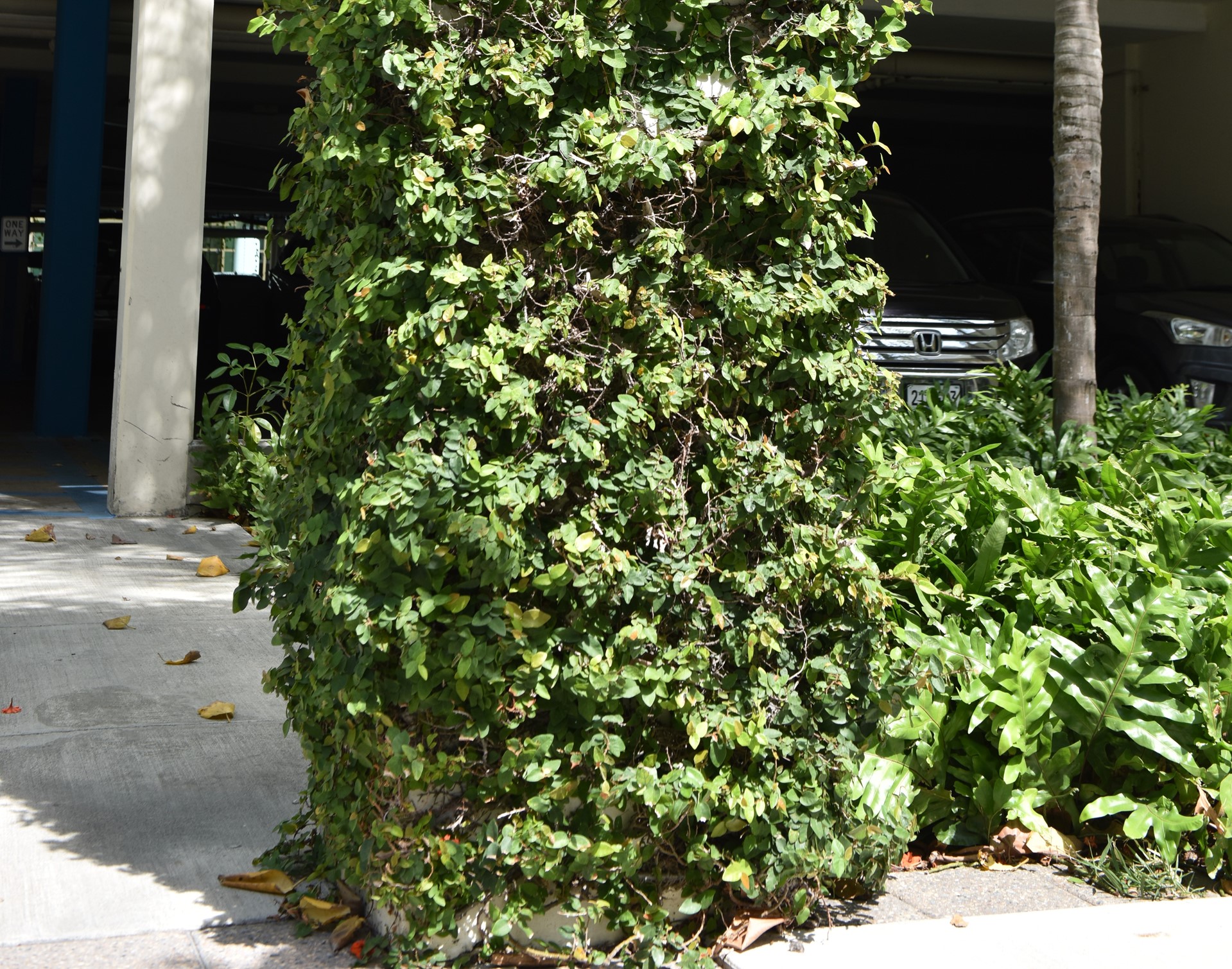
Known as one of the largest and most impressive plant genuses, fig, or Ficus, currently includes nearly 900 accepted species. The genus ranges from large sprawling trees to bushy shrubs and hedges, and even includes Ficus pumila — a hearty evergreen ground cover and climber that bears little resemblance to its mighty relatives.
"Hearty" when describing Ficus pumila is a double entendre because the new leaves of this charming plant are heart-shaped, like the foliage of many other tropical species. The specific epithet pumila means dwarf; however, "dwarf" should be taken lightly as this fig can be a vigorous spreader or climber and can create a dramatic effect in any design.
Native to East Asia and naturalised in the southeastern United States, it will grow enthusiastically in warm climates like the Caribbean provided it has plenty of humidity and the correct balance of sun and shade. It does not like full sun; it prefers indirect bright light and can even tolerate some dappled shade. Normally growing from a central stem in the ground, it will thrive in a well-draining soil and is quite drought and salt tolerant once established.
Akin to other species in the genus Ficus, the creeping fig has tiny aerial roots that shoot off the stems which cling to most porous surfaces and aid in its outward or upward growth. These aerial roots also secrete a white latex which aids in growth when it dries and adheres to the surface. With correct placement, it can reach 40 feet in height with a similar spread.
Its woody base does not require supplemental supports, which makes it easy to work with or train and prune into specific shapes for design aesthetics. Frequently used to soften the appearance of buildings or structures, it is also highly desirable to accentuate architectural features since it will take the form of the structure it is growing on with little maintenance aside from pinching or pruning occasionally.
Although not known for its inconspicuous flowers, it is a larval host plant for butterflies including the seldom seen "many-banded daggerwing," or Marpesia chiron.
There are several cultivars of Ficus pumila, which can also make a nice accent as an indoor plant, particularly in temperate climates where it will not survive harsh winters.
In Camana Bay, creeping fig can be found on Market Street near Petit Paris, gracefully intensifying the artistic structures that lead in and out of the parking garage.
This article was originally published in the April 2022 print edition of Camana Bay Times.

About the author
Shannon Schmidt is Operations and Horticulture Services Manager at Dart’s Arboretum Services Ltd. Joining Dart in 2012, Shannon previously worked in parks, public gardens and tourism properties, among others. Originally from the Finger Lakes region of New York State, Shannon loves island life, spending time paddleboarding around the canals and mangroves, freediving in the sea, and spending time outdoors with her two energetic Boston Terriers Nollie and Ebbie and her equally energetic partner Chase! Shannon holds a Bachelor of Science in Recreation, Park and Tourism Management from The Pennsylvania State University and a Diploma in Horticulture from the Longwood Gardens Professional School of Horticulture.